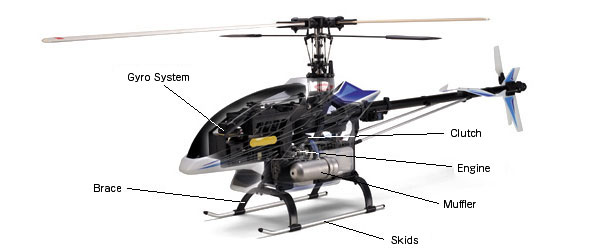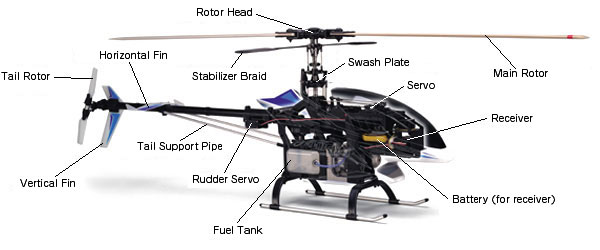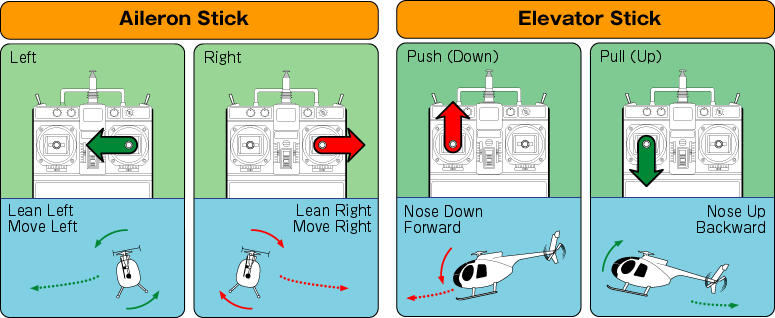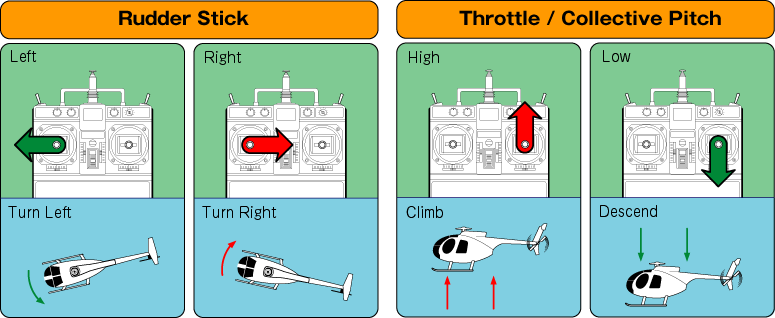Counter Torque
When the main rotor is rotating, a counter force is always present to spin the fuselage of the heli in the opposite direction to the rotor. The level of this force increases and decreases under the changing influences of main rotor speed and time. This makes it nearly impossible to adjust to the changes in counter torque that are moving the position of the fuselage through visual adjustments only. |
 |
Gyro System
For this reason, we rely on a unit using gyro sensors. Any swinging movement from counter torque (not any control input turning), by the nose of the fuselage, is detected and a signal sent to the tail pitch servo to change the pitch and compensate for the fuselage’s swing. Due to the heading lock functionality in the latest gyro’s, the original direction of the fuselage is memorised and maintained, making fo perfect tail rotor control and eliminating fuselage floating. |




